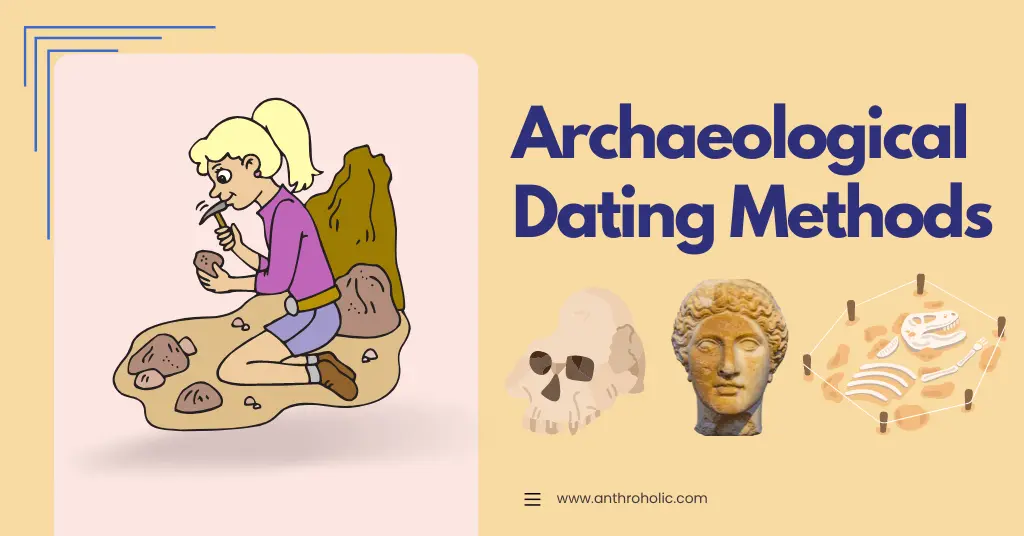AI Answer Evaluation Platform Live Now. Try Free Answer Evaluation Now
Archaeological Dating Methods
Archaeological dating methods are essential tools for understanding the past, providing context for ancient artifacts, and reconstructing human history. These techniques allow archaeologists to determine the age of objects, sites, and cultural phenomena, enabling the development of a chronological framework for our understanding of human civilization.

Relative Dating Methods
Relative dating methods are used to determine the chronological order of artifacts and events without providing a specific age. They provide a sequence of events, allowing archaeologists to understand the order in which different artifacts and cultures appeared.
Stratigraphy
Stratigraphy involves examining layers of soil, rock, and other materials to determine their relative ages. This method assumes that older layers are found below younger layers, providing a sequence of events for a particular site (Renfrew & Bahn, 2012). Key points in stratigraphy include:
- Law of Superposition: Assumes older layers are found below younger layers.
- Stratigraphic Profiles: Vertical cross-sections of excavations, showing layers and their relationships.
- Stratigraphic Correlation: Comparing stratigraphic profiles from different sites to identify similarities and differences.
Typology
Typology is the classification of artifacts based on their physical characteristics, such as shape, size, material, and decoration. Archaeologists use typology to group artifacts into categories and determine their relative ages by comparing them to known examples (Adams & Adams, 1991). Key concepts in typology include:
- Artifact Categories: Objects grouped by their shared physical characteristics.
- Relative Chronologies: Sequences of artifact types based on their relative ages.
- Evolutionary Typologies: Artifact sequences that show gradual changes over time.
Seriation
Seriation is a method used to arrange artifacts in a chronological sequence based on their relative frequencies or popularity. By examining the distribution of artifact types across a site, archaeologists can infer the order in which they were produced or used (Kendall, 1971). Key elements of seriation include:
- Frequency Seriation: Analyzing the relative frequencies of artifact types to establish chronological sequences.
- Contextual Seriation: Examining the relationships between artifact types and their archaeological contexts.
- Sequence Dating: Combining multiple seriation methods to produce a single chronological sequence.
Pollen Analysis
Pollen analysis, or palynology, involves studying pollen grains preserved in archaeological deposits to reconstruct past environments and vegetation. This method can provide information on the relative ages of deposits based on the presence of certain types of pollen (Faegri & Iversen, 1989). Key aspects of pollen analysis include:
- Pollen Diagrams: Visual representations of pollen data, showing changes in pollen frequencies over time.
- Pollen Zones: Layers of pollen deposition used to determine relative chronologies.
- Correlation with Other Methods: Using pollen analysis alongside other dating methods to refine chronological sequences.
Absolute Dating Methods
Absolute dating methods provide specific ages for artifacts or events, often expressed in years before the present. These techniques are crucial for constructing precise chronological frameworks and verifying relative dating methods.
Radiocarbon Dating
Radiocarbon dating, or carbon-14 dating, is an absolute dating method that measures the decay of carbon-14 in organic materials to determine their age. Developed by Willard Libby in 1949, radiocarbon dating has become a cornerstone of archaeology (Libby, 1955). Key aspects of radiocarbon dating include:
- Half-Life: The time it takes for half of the carbon-14 atoms in a sample to decay; approximately 5,730 years.
- Calibration: Converting radiocarbon ages to calendar years using calibration curves derived from tree-ring data and other sources.
- Limitations: Radiocarbon dating is most accurate for samples less than 50,000 years old and can be affected by contamination or environmental factors.
Dendrochronology
Dendrochronology, or tree-ring dating, involves analyzing the annual growth rings of trees to determine the age of wooden artifacts and establish precise chronologies. Developed by A.E. Douglass in the early 20th century, dendrochronology is an essential tool for dating wooden structures and objects (Douglass, 1929). Key concepts in dendrochronology include:
- Crossdating: Comparing tree-ring patterns in different samples to establish a chronological sequence.
- Master Chronologies: Long tree-ring sequences created by overlapping multiple samples from different trees or locations.
- Regional Climate Reconstruction: Using tree-ring data to reconstruct past climate conditions and verify radiocarbon dating results.
Potassium-Argon Dating
Potassium-argon dating is an absolute dating method that measures the decay of potassium-40 to argon-40 in volcanic rocks and minerals. This technique is especially useful for dating early hominid sites, as well as ancient volcanic eruptions (McDougall & Harrison, 1999). Key aspects of potassium-argon dating include:
- Half-Life: The time it takes for half of the potassium-40 atoms in a sample to decay; approximately 1.3 billion years.
- Sample Preparation: Requires careful extraction of argon gas from samples to avoid contamination.
- Limitations: Potassium-argon dating is most accurate for samples older than 100,000 years and requires volcanic materials for analysis.
Thermoluminescence
Thermoluminescence (TL) dating is an absolute dating method that measures the accumulated radiation dose in materials like pottery, bricks, and sediments. When heated, these materials release stored energy as light, which can be measured to determine their age (Aitken, 1985). Key concepts in thermoluminescence dating include:
- Radiation Dosimetry: Measuring the amount of radiation absorbed by a sample over time.
- Equivalent Dose: The radiation dose required to produce the observed thermoluminescence signal.
- Limitations: TL dating is most accurate for samples between 1,000 and 500,000 years old and can be affected by environmental factors or sample preparation.
Optically Stimulated Luminescence
Optically stimulated luminescence (OSL) dating is an absolute dating method that measures the time since a mineral, such as quartz or feldspar, was last exposed to sunlight. This technique is useful for dating sediments and archaeological sites buried by natural processes (Rhodes, 2011). Key aspects of OSL dating include:
- Luminescence Signal: The release of stored energy in a mineral when exposed to light.
- Dose Rate: The rate at which a sample accumulates radiation over time.
- Limitations: OSL dating is most accurate for samples between 100 and 300,000 years old and requires careful sample collection to avoid exposure to sunlight during excavation.
Challenges and Future Prospects
Archaeological dating methods face several challenges, including:
- Sample Contamination: Contamination by modern materials or other sources can impact dating accuracy.
- Environmental Factors: Changes in climate, radiation levels, or other factors can affect dating results.
- Limited Application: Some dating methods are only applicable to specific types of materials or age ranges.
Despite these challenges, technological advancements and interdisciplinary collaboration continue to improve dating techniques and expand their applicability. Future prospects in archaeological dating include:
- Improved Calibration: Developing more accurate calibration curves for radiocarbon dating.
- New Techniques: Exploring novel dating methods, such as electron spin resonance (ESR) or uranium-thorium dating.
- Big Data Approaches: Combining multiple dating methods and large datasets to refine chronological frameworks and improve accuracy.
Conclusion
Archaeological dating methods play a crucial role in understanding the past, providing context for ancient artifacts, and reconstructing human history. By employing a combination of relative and absolute dating techniques, archaeologists can establish chronological frameworks that help us piece together the complex puzzle of human civilization. As technology advances and interdisciplinary collaboration grows, these methods will continue to improve, providing even more accurate and detailed insights into the past.
See Also
References
- Adams, W. Y., & Adams, E. W. (1991). Archaeological Typology and Practical Reality: A Dialectical Approach to Artifact Classification and Sorting. Cambridge University Press.
- Aitken, M. J. (1985). Thermoluminescence Dating. Academic Press.
- Douglass, A. E. (1929). The Secret of the Southwest Solved by Talkative Tree Rings. National Geographic Magazine, 56, 736-770.
- Faegri, K., & Iversen, J. (1989). Textbook of Pollen Analysis. Wiley.
- Kendall, D. G. (1971). Seriation from Abundance Matrices. In Mathematics in the Archaeological and Historical Sciences (pp. 215-252). Edinburgh University Press.
- Libby, W. F. (1955). Radiocarbon Dating. University of Chicago Press.
- McDougall, I., & Harrison, T. M. (1999). Geochronology and Thermochronology by the 40Ar/39Ar Method. Oxford University Press.
- Renfrew, C., & Bahn, P. (2012). Archaeology: Theories, Methods, and Practice. Thames & Hudson.
- Rhodes, E. J. (2011). Optically Stimulated Luminescence Dating of Sediments over the Past 200,000 Years. Annual Review of Earth and Planetary Sciences, 39, 461-488.



